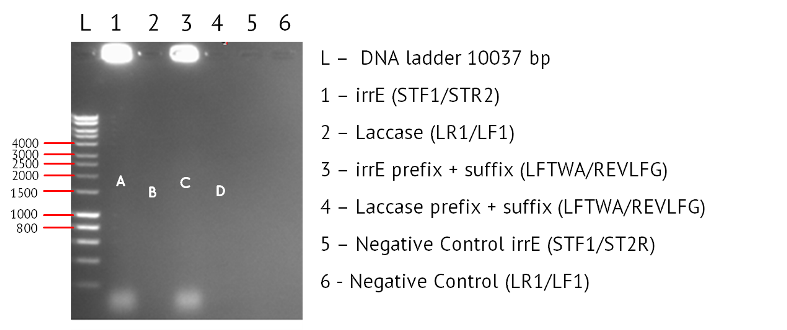Team:University College London/LabBook/Week12
From 2012.igem.org



Contents |
11.4

Monday 27.8.12
Aim: To find the right concentration of W3110 E. coli cells in LB that would be later used to streak out on the agar plates to obtain an optimal amount of colonies.
Methods: 1. The colony was inoculated the night before in 10ml of LB plus 10 ul CMP 2. The day after 5 dilutions were made from the sample 3. First solution - 1ml of the original solution & 4ml of the LB Second – 1ml of the first solution & 4ml of the LB Third – 1 ml of the second solution & 4ml of the LB Fourth – 1 ml of the third solution & 4ml of the LB Fifth – 1ml of the fourth solution & 4ml of the LB
Tuesday 28/08
Aim: (on Monday grew WNu o/n in prep for miniprep. This miniprep will be used as a template for pcr of a 2nd nuclease.
Not the synthesised staph aureus nuclease (Plan A). The Wnu Nuclease is considered our plan B.
Methods: (10ul cells, 10ul, amp, 10ml (LB). Wnu cells were obtained from a glycerol stock.
Optimal number of colonies was achieved using the fourth solution/dilution (24 colonies). Using the dilution number 4 we plated out 12 plates.

12.2
Aim - Amplify irrE from Deinococcus radiodurans.
Method
Step 1 - Setting up PCR tubes: Thaw reagents and add to PCR tubes in the proportions described in the table below
| PCR Components | Volume (ul) |
|---|---|
| 5x Reaction Buffer | 10 |
| 25mM MgCl2 | 4 |
| 10mM dNTPs | 1 |
| 10uM Forward primer | 5 |
| 10uM Reverse primer | 5 |
| DNA Polymerase | 0.25 |
| Nuclease Free Water | 24.25 |
| Template DNA | 0.5 |
| Total Volume | 0.5 |
Step 2 - PCR program: Add PCR tubes to a thermocycler and run under the following conditions.
| PCR conditions | Temp (oC) | Time (s) |
|---|---|---|
| Initial Denaturation (1 cycle) | 95 | 30 |
| Denaturation/Annealing/Extension (30 cycles) | 95/55/72 | 10/25/120 |
| Final Extension (1 cycle) | 72 | 600 |
| Hold | 4 | ∞ |
Step 1 - Setting up PCR tubes: The table below gives the identity of the primers used for each reaction.
| DNA Template | Function | Module | Primer Pair | Primer | Primer Sequence |
|---|---|---|---|---|---|
| Deinococcus radioduran colony | irrE | Salt Tolerance | STF1/ST2R | STF1 | atggggccaaaagctaaagctgaagcc |
| ST2R | tcactgtgcagcgtcctgcg | ||||
| STF3/ST4R | STF3 | gtttcttcgaattcgcggccgcttctagagatggggccaaaagctaaagctgaagcc | |||
| ST4R | gtttcttcctgcagcggccgctactagtatcactgtgcagcgtcctgcg | ||||
| No Template (Negative Control) | N/A | Salt Tolerance | STF1/STF2 | STF1 | atggggccaaaagctaaagctgaagcc |
| ST2R | tcactgtgcagcgtcctgcg |
Results:

Conclusion: We will revise the protocol to see if we can detect any bands.
12.3
 "
"